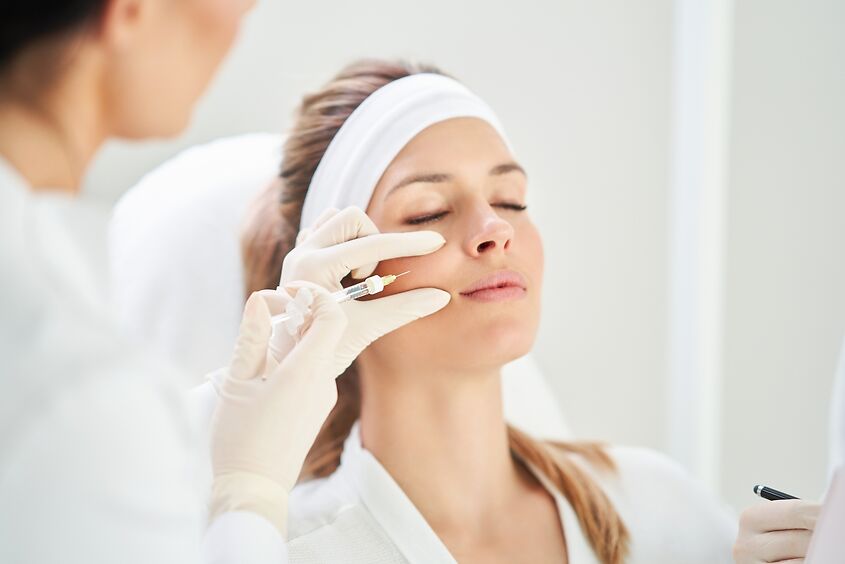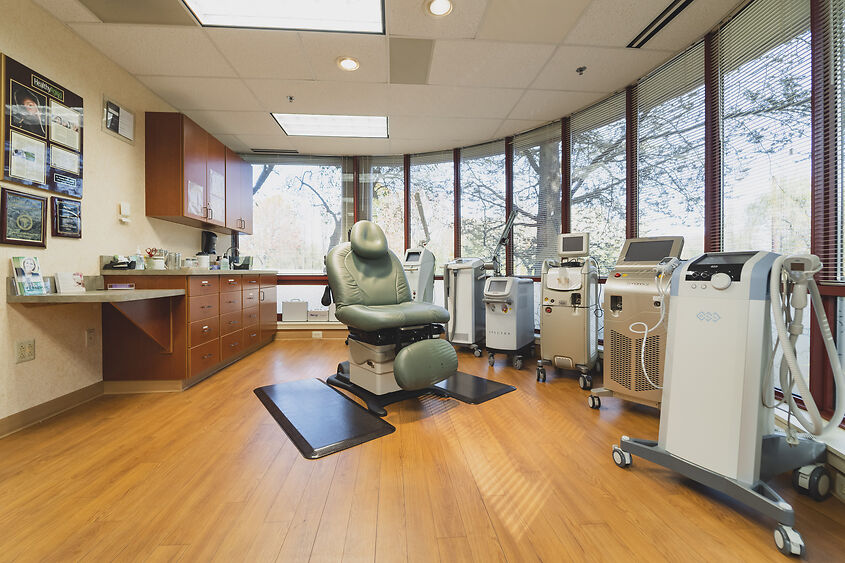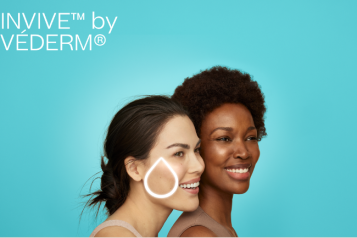In the realm of aesthetic medicine, the transformative power of neuromodulators has become a cornerstone in the pursuit of age-defying beauty. From softening forehead lines to addressing uneven eyebrow height, Dr. Victoria A. Cirillo-Hyland guides us through the transformative potential of these agents. Join us in unraveling the mysteries of neuromodulators and their multifaceted impact on both aesthetic aspirations and overall well-being.
 Photo Credit: Courtesy of Shutterstock
Photo Credit: Courtesy of Shutterstock
What are neuromodulators, and how do they play a role in transforming one's appearance?
Neuromodulators represent a revolutionary category of wrinkle-relaxing treatments, leveraging the potency of botulinum toxin to redefine one's visage. This elite group, featuring Botox Cosmetic, Dysport, Xeomin, Jeuveau, and Daxxify, employs precise injections into targeted muscles. By skillfully interrupting the communication between nerves and muscles, these interventions induce a profound relaxation effect, gradually smoothing the skin's surface. The transformative impact is particularly evident in areas vulnerable to the passage of time – the forehead, between the brows, upper lip, and crow's feet – where aging lines undergo a remarkable softening. The result is a refreshed countenance, unveiling a more youthful and stress-free expression.
What are the common neuromodulators used in cosmetic procedures, and how do they differ in their effects?
Among the prevailing neuromodulators, the most common include Botox Cosmetic, Dysport, Xeomin, Jeuveau, and Daxxify. While nuanced distinctions exist between them, their similarities outweigh the differences. Patients often observe variances in onset speed or duration, prompting a personalized exploration to discern preferences. Recognizing the uniqueness of each individual, the journey of sampling and selecting the most suitable neuromodulator becomes an accessible and empowering endeavor.
In what ways can neuromodulators be used to enhance facial symmetry and balance?
Harnessing the transformative potential of neuromodulators extends beyond mere wrinkle reduction. These innovative treatments emerge as sculpting tools, harmonizing facial features by addressing uneven eyebrow height. The targeted softening of robust muscles responsible for lines and wrinkles on the forehead, between the brows, and around the eyes achieves more than just cosmetic refinement—it unveils a newfound equilibrium, lending the face a gracefully balanced and softened aesthetic.
 Photo Credit: Courtesy of Dr. Victoria A. Cirillo-Hyland
Photo Credit: Courtesy of Dr. Victoria A. Cirillo-Hyland
How long do the effects of neuromodulator treatments typically last, and is there a need for regular maintenance?
The longevity of neuromodulators typically spans a range of 3 to 6 months, with duration variations stemming from individual factors. To optimize and sustain the desired effects, a prudent approach involves scheduling follow-up maintenance around the 4-month mark. This strategic recommendation ensures a consistent and enduring outcome, tailored to the unique needs and responses of each individual.
Are there any non-cosmetic benefits associated with neuromodulator use, such as in treating medical conditions or improving overall skin health?
Neuromodulators transcend the realm of cosmetic enhancements, finding invaluable applications in various medical domains. Their therapeutic reach encompasses alleviating conditions such as migraine headaches, correcting strabismus in the eyes, addressing TMJ syndrome, managing spasticity disorders, mitigating cervical dystonia, and regulating detrusor muscle hyperactivity in the bladder. This diverse spectrum of medical applications underscores the multifaceted impact of neuromodulators, positioning them as versatile tools in the pursuit of both aesthetic and health-related goals.
Embark on your personalized journey towards timeless beauty and well-being—schedule a consultation with Dr. Cirillo-Hyland today to explore the transformative possibilities that neuromodulators can bring to your unique aesthetic goals.
For more information, visit Victoria A. Cirillo-Hyland, MD, FAAD's social media:





















